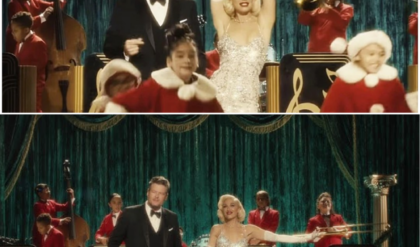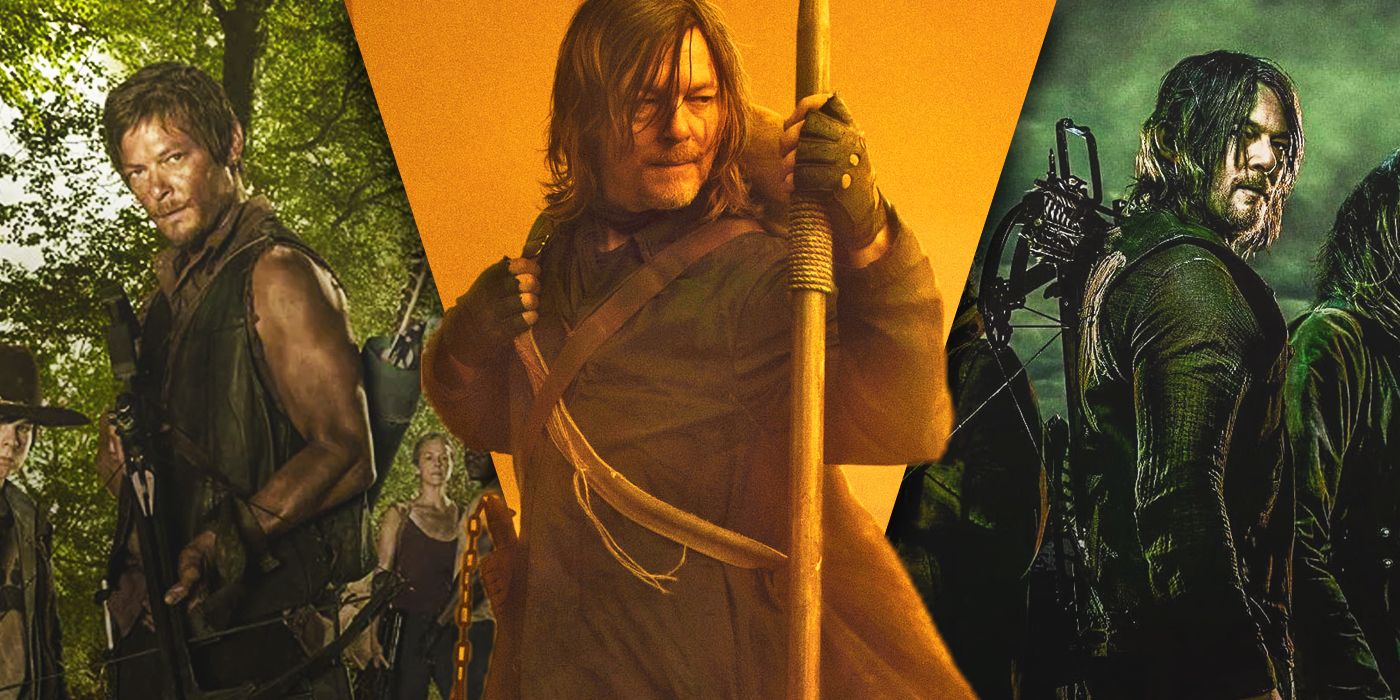
The Walking Dead franchise’s original show is over, but the story is far from past its glory days. The sensational horror TV series is headed into a new era, focusing less on survival in the post-apocalyptic world and more on how communities and groups strive to thrive in the new world. Earlier spin-offs, such as Fear The Walking Dead and The Walking Dead: World Beyond, performed poorly despite occasional success. However, when the original series concluded, and spin-offs such as Dead City and The Ones Who Live continued the storylines of beloved long-running characters, the thrilling world of the undead was rejuvenated.
Arguably, no other spin-off sparked as much interest and intrigue as Daryl Dixon. The series not only features one of the most popular characters in the entire franchise but takes viewers on a journey into undiscovered parts of the post-apocalyptic world. A jump from the standards of the TV series would have been risky for the future of the franchise had it not been for the nuanced Daryl. From the moment his character was introduced in Season 1 of The Walking Dead, fans were captivated. The fascination with Daryl intensified throughout the series, which featured his exceptional character arc.
Merle held Back Daryl’s Progression
Season 1 & 2
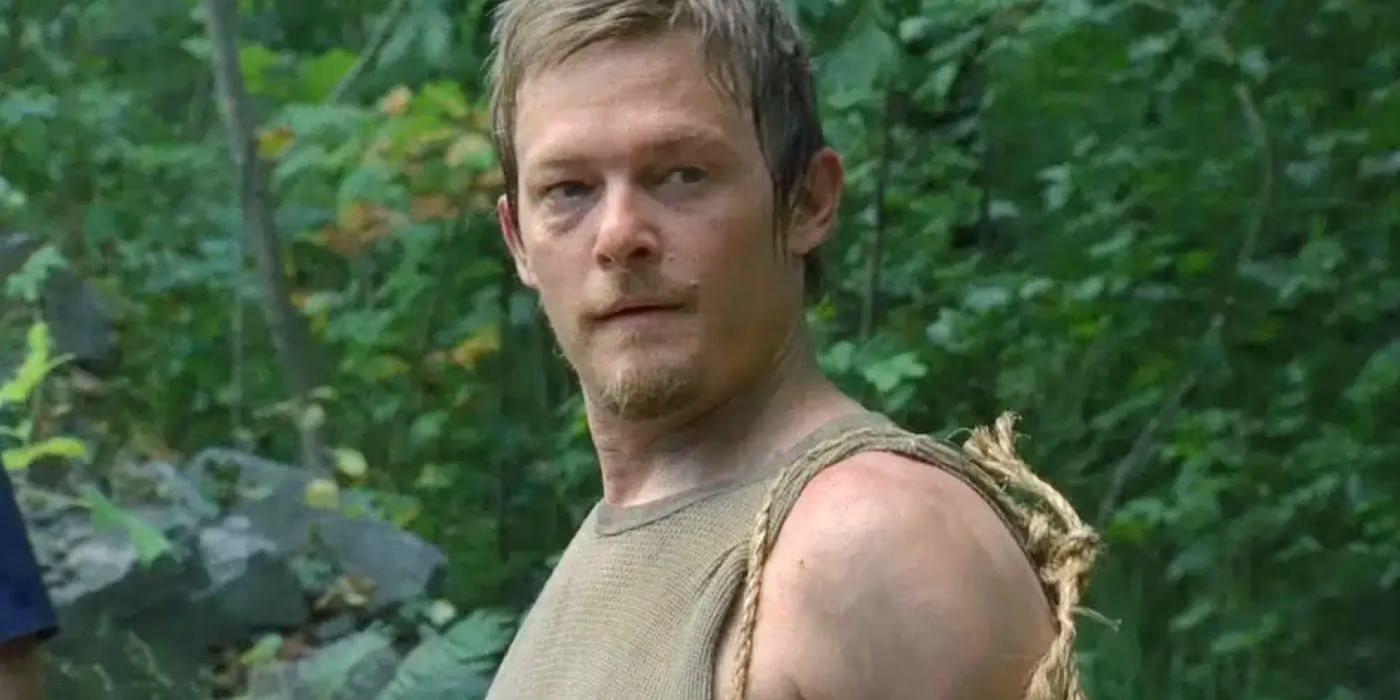
Daryl Dixon was not a character in Robert Kirkman’s comics.
Daryl Dixon is a beloved Walking Dead hero who quickly became a fan favorite. However, his heroism and extraordinary survival skills didn’t always define his storyline. Despite Daryl’s obvious ability to contribute to the Atlanta group, such as hunting and providing protection, most of his companions didn’t like him. In Season 1, he is introduced after Rick is reunited with his family. Daryl’s first impression is violent and rash, which is due to him learning right away that his brother, Merle, had been left on a rooftop in Atlanta. Though he proves himself when he helps defend their small group back in Atlanta and later when they travel to the CDC, Daryl remains an outsider who doesn’t have real connections aside from being a fellow survivor. After not being able to locate Merle and being seemingly forever separated from his brother, Daryl is able to grow.
While Season 1 made Daryl’s character intriguing, it was his growth in Season 2 that made viewers fall in love. On the Greene Farm, he was the most determined to find the missing Sophia and comfort her grieving mother. After Sophia is revealed to be dead, Daryl becomes distant, debating his purpose in the world and within their group. This didn’t make his character less likable but made him more relatable and, therefore, interesting. Seeing him mourn the death of a child he barely knew was endearing and proved the stereotypical “redneck” character had more heart than his allies gave him credit for. This season also featured the beginning of the most beloved friendship in the series. Daryl tries to pull away and convince others he doesn’t care, but Carol’s determination and kindness towards him eventually lead to his reintegration into the group. From this point on, his character was defined by his dedication to his found family.
His Family Becomes His Only Priority
Season 3-5

Reedus’s Daryl was only supposed to be a supporting role in Season 1. However, the character was so popular that the creators decided not to kill him off and experiment with the role.
Daryl’s character and role in Rick’s group were solidified in Season 3. He played a major part in taking over the prison as a new home and became a major influence, not only as a protector but a valued member who was heard and respected. A defining moment for him in this season is when Rick struggles to cope with the death of his wife, Lori, and Daryl takes charge, ensuring newborn Judith is taken care of and protected. This was also the season in which Daryl reunited with Merle. Both brothers abandon their current groups in favor of each other, but Daryl eventually convinces the group that they need him, and that includes putting up with Merle’s presence. One of the most heartbreaking moments is when he finds Merle turned into a walker by a fatal wound from the Governor. This moment of unbridled grief and heartbreak made his character more nuanced, proving his emotions went far deeper than his stoic personality.
This emotional evolution for Daryl continued in Season 4. Despite being an incredibly fearless Walking Dead character, he was also one of the most loving and heartfelt members of Rick’s group. At this point, his authority was well-established, and he was a member of the council at the prison. However, when the prison fell, Daryl digressed into his old hopeless ways, convinced everyone he loved was dead or gone. It was his relationship with Beth, who he escaped from the prison with, that pushed him to keep fighting. When he lost her, he was lost, becoming a brief member of the vile and devious group, The Claimers. This moment of siding with these villains was an intriguing dive into the complexities of Daryl’s characterization. He realized that if he had ended up living in the apocalyptic world with Merle, he could have ended up like these horrific, bloodthirsty survivors. Instead, reuniting with Rick re-established Daryl’s purpose in the world: fighting for his family.
By the time the survivors reunite and reach Alexandria in Season 5, Daryl has gone through an exceptional character arc. Fans loved that he was still the dry, serious survivor who had an underlying sensitive and passionate side to those he cared about. His ability to read people was an underlying aspect of his character, highlighted in the ways he distrusts outsiders and sees the best in people who earn respect. This paid off this season when he was assigned a role as the new recruiter, working with Aaron to bring newcomers into their community. While it was endearing that Rick trusted Daryl without question, it was refreshing to see a leader like Deanna, who didn’t know him intimately, see his promising ability to read and understand people.
Daryl’s Plot Armor is Solidified Mid-Series
Season 6-8
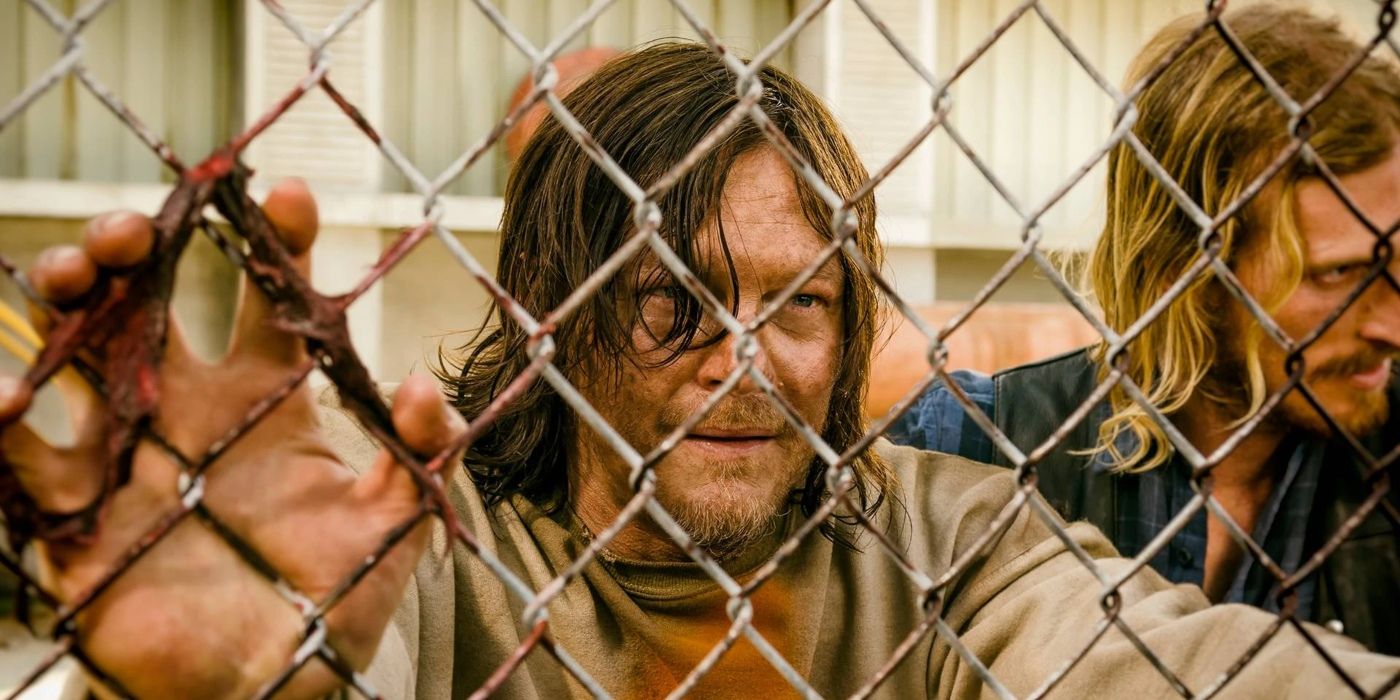
Norman Reedus’s reality TV show, Ride with Norman Reedus, began in June 2016, shortly after the sixth season of The Walking Dead premiered in October 2015.
The Saviors War, which spans from the end of Season 6 to the end of Season 8, is one of the lengthiest and least liked timelines in The Walking Dead. However, it did revolutionize the show, permanently changing the dynamic of the Alexandria group and the characterization of several survivors. At the beginning of Season 6, Daryl was unquestionably one of the most popular characters despite the continuously growing cast. Since Rick is now the leader of this community, and Daryl is one of his closest allies, he is established as one of the most respectable people in Alexandria. His plot armor is also solidified when he defies the odds, encountering a band of Saviors and blowing them up with a rocket launcher, taking out a large group of armed people in seconds.
Daryl begins the conflict with the Saviors completely dedicated to working with the Hilltop to ensure an alliance for his community. This changes when Negan shows up, killing Glenn and Abraham and taking Daryl captive. Due to Daryl’s outbursts while Negan was holding them captive and threatening them, he blamed himself for the demise of his two dear friends. The torture he experiences at the Sanctuary is the first instance in which Daryl’s character is wholly vulnerable, nearly reaching his breaking point. He proves his exceptional resilience when he escapes from the Sanctuary, highlighting why he is one of the most loved Walking Dead characters ever. Toward the end of Season 7, he’s more like his earlier characterization than ever before. Instead of just focusing on his family, Daryl becomes determined to take down the Saviors by any means necessary.
Season 8 of The Walking Dead featured the most intense and organized conflict in the original show. Alexandria, the Hilltop, the Kingdom, and Oceanside band together to take out Negan and the Saviors. Daryl takes an active role in attacking the Sanctuary to corner them and force a surrender. This causes the first major fight between Daryl and Rick since their brotherly bond, with Rick trying to stop Daryl from blowing up the Sanctuary and killing the innocent workers in the complex. After the demise of the beloved Carl and Negan burning most of the houses in Alexandria, everyone decides to take one final stand. When Rick chooses to have mercy on Negan and spare him after the war, Daryl seemingly respects the decisions of his leader. However, he secretly begins plotting with Maggie to assassinate Negan while he’s imprisoned. Their plan never came to fruition, but this act was the first sign Daryl was becoming more independent and his character is no longer largely defined by his allegiance to Rick.
He Took Center Stage After Losing Rick
Season 9-11
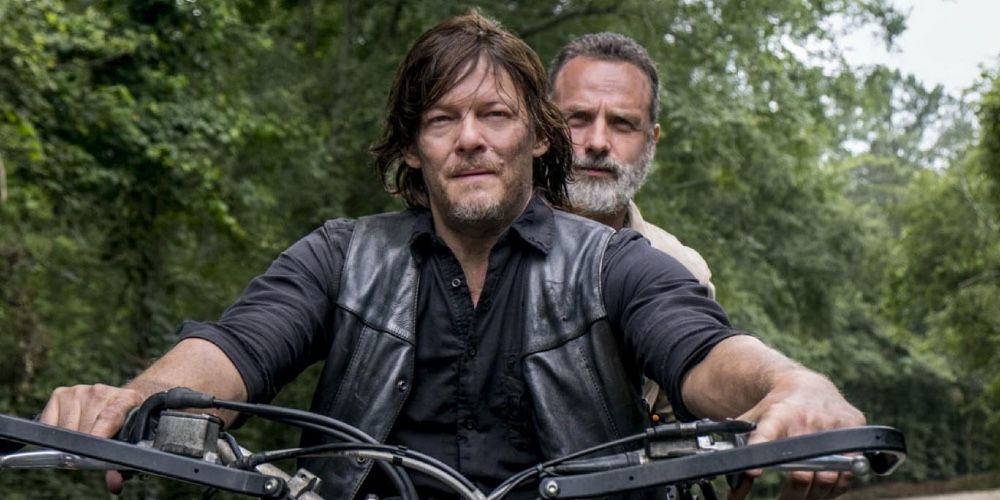
Andrew Lincoln’s Rick leaves The Walking Dead in Season 9, Episode 5, “What Comes After.”
At the beginning of Season 9, the communities have a begrudging alliance with the Saviors, and Rick is trying to achieve the vision Carl had for the future of their world. Daryl, on the other hand, is tired of being the overseer of the former villains and continues to fight with the Saviors while also plotting with Maggie to kill Negan. This causes a fight between him and Rick. Shortly after this squabble between the two, Rick blows up the bridge, seemingly dying. This last encounter with Rick, despite ending with a loving heart-to-heart, haunts Daryl for years. He lives outside the allied communities, searching endlessly for Rick’s body to give all of his loved ones closure. He only returns to the fold when the Whisperers threaten the Hilltop, giving him a reason to crawl out of his endless despair.
Though the two men had one of the most endearing relationships in the show, and fans are still looking forward to Daryl and Rick reuniting at some point in The Walking Dead franchise, losing his long-time leader and friend gave Daryl the chance to define his own life and future. He quickly took center stage, leading along with other respected leaders to fight back against the Whisperers. His relationships also grow and change throughout this season. When Carol, riddled with grief over losing her son, inadvertently causes Connie, Daryl’s close friend, to be trapped in a cave with walkers, his oldest friendship is challenged. Though they eventually make amends in Season 11, Daryl’s ability to challenge his longest relationship highlights his ability to make decisions for himself without simply focusing on the safety and comfort of their original group members.
By Season 11, Daryl is not just a leader and the most heroic survivor in The Walking Dead, but a father figure. After Michonne leaves in Season 10 and learns Rick is alive and is determined to find him, Daryl takes on the main role of protecting and caring for RJ (Rick Jr.) and Judith. During their final showdown within the Commonwealth, there is an unforgettable scene when Daryl carries an injured Judith to safety, mirroring Rick carrying Carl onto the Green Farm in Season 2. He doesn’t remain in the shadows and plays the part of the dedicated soldier in this final battle. Instead, he took center stage, standing up along with his friends to demand the Commonwealth protect everyone and not just a few wealthy citizens. The most memorable line in this last season is when Daryl tells Pamela, “We ain’t the walking dead,” contradicting a common belief that their world is defined by death and instead supporting the idea that in this post-apocalyptic world, people matter more than anything else.
Daryl Dixon’s Character Revolutionized the Franchise
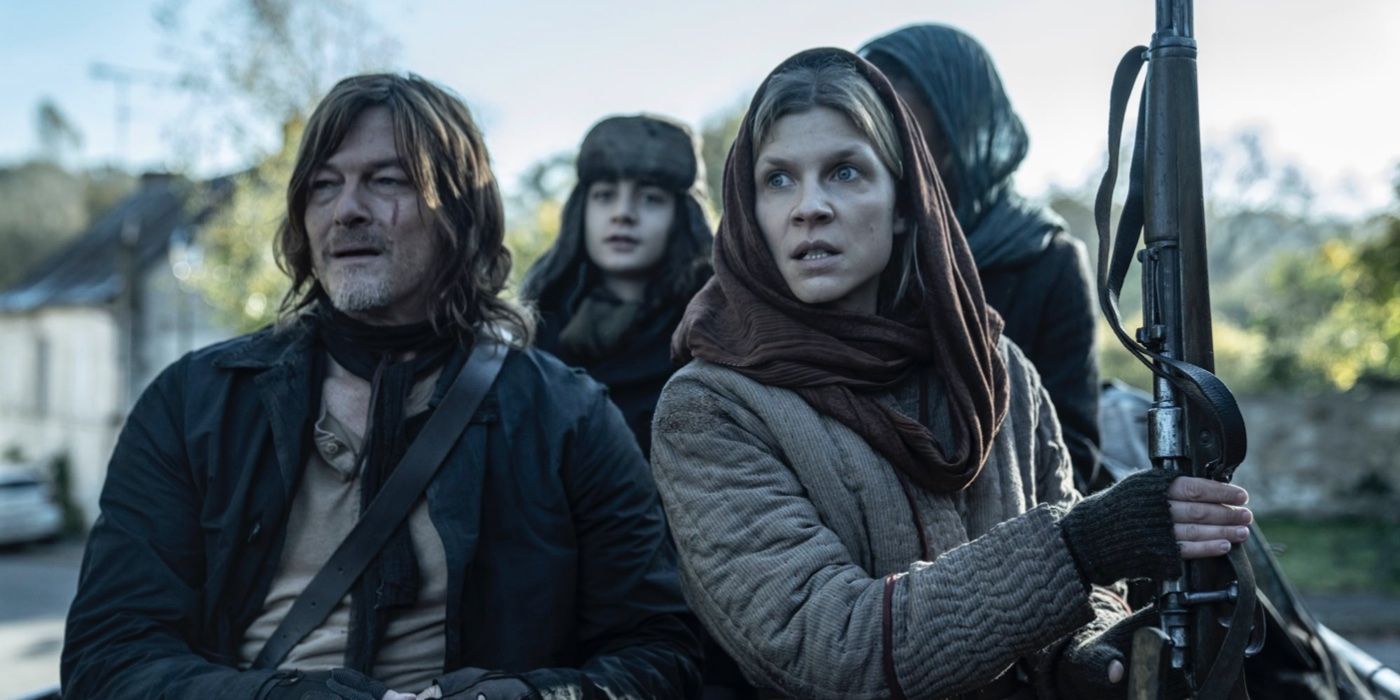
The highest-rated Walking Dead spin-off currently is The Ones Who Live.
When Daryl is last seen in The Walking Dead, he promises Judith he’ll bring Rick and Michonne back home. In Daryl Dixon, it’s revealed that he was imprisoned on a ship by the Pouvoir Du Vivant and ended up in France after staging a mutiny on the vessel and escaping. Though his initial intention is to find a way to return home, he eventually becomes entangled in Isabelle’s plot to find a safe place for Laurent, who is believed to be the savior of humanity due to his miraculous birth to an infected mother. His dedication to protecting these people forms a unique bond, showing Daryl there’s more to fight for than his close-knit community back in the United States. By the conclusion of Season 1, his new friends make him turn his back on a ship that could take him home, choosing instead to save Laurent from a small horde of walkers.
There are many aspects to look forward to in Daryl Dixon Season 2, including Carol’s return to The Walking Dead franchise. This storyline, featuring two long-running characters of the series, will continue the epic scope of the post-apocalyptic world. In addition, there’s no doubt that this spin-off is the most substantial evolution in the franchise. Not only did Daryl bring the audience on an adventure that outlined how other parts of the world handled the undead outbreak, but it emphasized how one character can have an amazing influence on a major pop culture icon. Daryl Dixon wasn’t part of the popular comic source material and wasn’t intended to survive the first season. Yet, his complex, lovable characterization became one of the most captivating aspects of the franchise.
Viewers are excited to see how all The Walking Dead spin-offs will continue the storylines of long-running characters and are hopeful this will include some eagerly-awaited reunions. However, fans are still engaged in the horror franchise after over a decade because of the creators’ ability to evolve and transform the storyline for continuous appeal. Daryl Dixon offers the best of both desires, following one of the longest surviving characters into a fresh, exciting plot.
